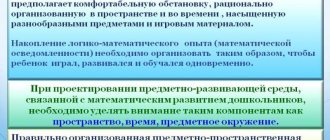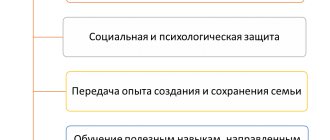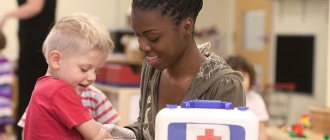Types of joint activities between children and parents
Types of joint activities of children with parents.
Organization of holidays:
children's birthday, Christmas holidays, Children's Day, Holiday of knowledge.
The holiday atmosphere will definitely bring adults and children closer together in preparing the environment, writing a script, creating a menu, and making prizes. It is better if each family member independently prepares competitions, costumes, games, surprises, and takes an active part.
Creativity
The child himself must become the initiator of such activities. The parent joins in the creative work offered by the child. At the same time, an adult can offer his own projects: making a collage from natural materials, publishing a family wall newspaper, making greeting cards. This promotes the development of children's imagination, independence and self-expression.
Reading books
There is a “Reading Hour” of books of the child’s choice or a special ritual before bedtime. At such moments, along with the development of the cognitive sphere, the child develops moral and personal qualities without direct moral teaching. And most importantly, at such moments the child has a desire to talk about his secrets and problems.
Cooperative games
Board games such as: lotto, dominoes; printed board games; verbal-logical, etc. enhance close interaction between children and parents. Play is a very pleasant activity for a child, within which he develops and at the same time is educated. During play with a child, an adult finds himself in a situation “on equal terms.” And when the child explains the course and rules of the game, the adult falls into the role of “learner.” In joint play activities, the formation of moral and volitional qualities of the child’s personality occurs.
Theatricalization
Children are fans of dressing up and transforming using the wardrobe of adults. Of course, at such moments the child needs spectators, who become parents. In such activities, children realize themselves and become liberated, practicing and acquiring new forms of communication.
Family excursions and trips
Such trips can be organized to a park, a forest, or a museum. The parent acts as the leader, and the child is involved in planning the route: where they will go, what to take from food, toys. During the excursion, the adult encourages the child to be active in learning about the environment.
Visiting theaters and cinemas
At the initial stage, the initiator of such visits is the parents, introducing the child to the world of beauty. Then the children themselves choose the place and topics of viewing.
Maintaining family albums, filling out the “Album of Discoveries”
This is an interesting, exciting activity between parents and a child, through which adults become clearer and closer to their children, and children become closer to adults, which helps strengthen family relationships. By getting to know himself, the world around him, and other people, a child can at any moment receive understanding and support from a loved one.
Joint activities of parents and children.
“Joint activity of an adult and a child” - this concept has been included in the modern typology of children’s activities, presented in the federal state educational standard for preschool education” dated October 17, 2013, No. 1155, Moscow
I propose to consider the experience of organizing joint activities between adults and children.
It should be noted
that the activities of two or more participants in the educational process (adults and students) to solve educational problems in the same space and at the same time presuppose individual, subgroup and frontal forms of organizing work with students.
This activity
It is distinguished by the presence of a partner (equal) position of an adult and a partner form of organization (the possibility of free placement, movement and communication of preschoolers in the process of educational activities).
The most suitable form is a creative workshop.
Why a creative workshop?
Because:
- rapprochement with parents of students,
- bringing the souls and minds of people involved in the child’s life closer together,
The creative workshop provides just such an opportunity.
- the creative atmosphere of the meetings encourages you to open up, share your knowledge and learn from others, as well as get to know your child, his abilities, and gives you the opportunity to be proud of him.
Creative union of parent and child, their
close communication in a creative atmosphere, where their talents are revealed, where they learn from each other, provide an opportunity to look at the relationship with their child in a new way.
Teachers, in turn,
, show the child’s capabilities in acquiring knowledge, skills to communicate with adults and peers, achievements or difficulties that a particular child has, and ways to correct them.
Adult task
build relationships with parents in a constructive way, provide them with support and assistance.
Thus, the creative workshop
– as one of the forms of interaction between a kindergarten and parents helps not only to establish emotional contact with parents, improve child-parent relationships based on substantive joint activities, but also to become a kind of bridge from children to parents, from parents to children and from teachers to parents and children, where their talents are revealed, where they learn from each other, are given the opportunity to look at the relationship with their child in a new way.
For example, the central place
in the “workshop” it occupies a common table, at which children sit at will and freely communicate with each other. Having lost interest in the common cause, the child is free to get up and do what interests him. The behavior of mothers or grandmothers (and in most cases they are the ones present at such meetings) is predictable: “Sit down and finish it!”
It is important for parents to explain
The main thing is that the child feels comfortable. And if the mother continues to engage in a common task, she can attract the child’s attention at the following stages: “Look how wonderful it is! Do you want us to finish the craft together?” etc.
Conclusion:
Such meetings help adults understand that children have the right to work at their own pace. If the child is alone, he is often urged: “Why are you delaying? Paint (paste, cut, sculpt, draw) faster!” When he works and creates among his peers, the pace is completely different. And sometimes slowness becomes an impulse for creativity. In addition, working at a slow pace gives you a chance to learn to plan: I will do this now, and this tomorrow.
During joint activities
“Evening workshops” create a game situation in which preschoolers and their parents are invited to master various techniques for creating crafts, paintings, and books in a playful way.
While studying the proposed topic, children and parents exchange information about the technology for creating a particular product and enrich their active vocabulary during games. Parents observe and participate in their children’s activities, getting an idea of the variety of didactic games aimed at developing the child’s speech.
The friendly atmosphere of a family evening evokes unique emotions from joint creativity, during which a whole range of tasks are organically and imperceptibly solved:
1. Educational:
- development in children of ideas about the characteristic features of animals, the mood of people, families;
- enrichment of the active vocabulary with words from thematic groups in accordance with the topics “Animals”, “Family”, “Fairy Tales”, development of the grammatical structure of speech;
- introducing children to art, developing aesthetic taste, perception of beauty;
— formation of skills in creative activities;
— enrich the emotional shared experience of family members, teach skills of interaction between them through joint activities.
2. Developmental:
— development of mental processes: attention, memory, thinking, perception, as well as arbitrariness of attention and activity;
— development of communication skills, skills of partnership with adults;
— develop children and parents’ interest in spending time together;
3. Educational:
- fostering a sense of camaraderie and a desire to help;
— formation of motivation for joint activities;
— nurturing love for the natural world, family and the man-made world;
- to develop in parents confidence in their own pedagogical capabilities, the ability to know and understand their children;
— to unite parents and children, to help children understand their parents, and parents to understand their children.
4. Health-saving:
- creating a friendly, emotionally rich atmosphere of joint creativity between children and adults, an atmosphere of joy and goodness, creating a sense of group unity;
- development of general and fine motor skills.
In addition, the following educational areas are implemented in this joint activity: social and communicative development; cognitive development; speech development; artistic and aesthetic development; physical development.
To successfully complete health and educational tasks, compositional techniques of health-saving technologies are included in the activities.
Various forms were used in creative workshops. Finished works: books, paintings, crafts, drawings “live” in the group, decorating the halls. The books received great interest among children, parents, and teachers. After all, you can look through them, take them home and tell your family how they spent the summer, who has their favorite toy, what sports a friend’s family does, etc. The books were used by children, parents and teachers of other groups.
Through the use of the book, important speech tasks are performed:
- development of free communication with adults and children, mastery of constructive ways and means of interaction with others;
- development of all components of children's oral speech (lexical side, grammatical structure of speech, pronunciation side of speech; coherent speech - dialogical and monologue forms) in various forms and types of children's activities;
- practical mastery of speech norms by pupils.
Even if this is the creativity of the parents, but the main character of all this is the child. Everything for him and for his sake!
Thus, the system of joint work with children and parents, created by me in close collaboration with my colleagues and parents, will further develop and improve. It will allow us to successfully resolve issues of children’s health, because “the greatest human asset in life is health and mind” (from the commandments of the Buddha).
Article "The role of joint activities of primary school children and parents"
Joint activities of children and parents as a means of developing children's creative activity.
In the education system, a special place has recently been given to the joint activities of children and parents, which acts as a means of motivating the development of personality towards knowledge and creativity through a wide variety of activities.
Every person has a need for creative activity and creative abilities. Unfortunately, they often remain unrealized. In childhood, a person seeks opportunities to realize his creative potential, but sometimes encounters resistance from the environment and his immediate environment. If a child does not gain positive experience in creative activity, then in adulthood he may form the belief that this direction of development is not available to him. But it is through creativity that a person can reveal himself as a person.
What is creativity? It is an activity that generates something qualitatively new and is distinguished by uniqueness, originality and social historical significance. Creativity gives a person the experience of his integrity. It reflects his inner world, his aspirations, desires, experiences. At the moment of creativity, a person most fully and deeply experiences himself as a person and realizes his individuality.
Joint creativity between children and parents forms good trusting relationships between them, has a positive impact on the child’s development and teaches him to cooperate. The creative process stimulates the all-round development of the child. Motor skills are improved, imagination is formed, and creative potential is revealed. In addition, joint creative activity is an interesting and exciting pastime. Joint creativity makes up for the lack of parental attention, because parents usually spend the whole day at work, it relieves the pressure of parental authority, allows the child to express himself and feel his importance. The joint creativity of children and parents evokes a lot of positive emotions and creates a particularly warm atmosphere in the family. Children love to imagine and make things.
If your child shows creative initiative, encourage it. Help bring his fantasy to life. The most important condition for your joint creativity is that you don’t have to force it! Organize the creative process correctly and enjoy it!
Basic forms of cooperation between teachers, children and parents.
1. Class meeting to discuss issues that reflect the interests of children and parents. The meeting can be either parental (only the parents of students are present at it), or general, when both parents and children participate in it. The meeting can take the form of a conference, debate, or include playful and entertaining elements. Minutes must be kept at the meeting, and at the end a decision is made, which is also included in the minutes. Each subsequent meeting usually begins with information about how the decision of the previous meeting was implemented. The main purpose of the meeting is to harmonize, coordinate and integrate the efforts of the institution and the family in creating conditions for the development of the child’s personality. At the meeting, problems of group, class and parent group life are discussed. Meetings at which children show their fathers and mothers theatrical, artistic, and applied skills and achievements are very useful.
2. Forms of cognitive activity:
– public knowledge reviews, which are prepared and held jointly with parents (parents can participate in the design, preparation of prizes, evaluation of results, awarding);
– creative reports on subjects, for example, in the form of a subject evening;
- open lessons to which parents are invited (of course, such lessons should then be discussed and analyzed together with parents);
Participating in joint activities with children will help you and your child easily adapt to the requirements of the school curriculum.



